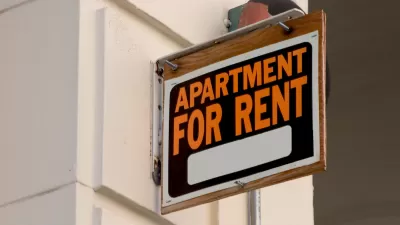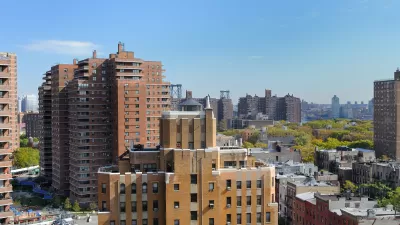When the Townhomes on Capitol Hill replaced the Ellen Wilson public housing project 14 years ago, mixed-income housing was a novel strategy. Now that such projects are common, what lessons can the Townhomes provide for developing affordable housing?
"After the U.S. Department of Housing and Urban Development awarded a $25 million grant [PDF] to a neighborhood group in 1993 to tear down 134 abandoned units at Ellen Wilson and replace them with an equal number of mixed-income homes, many civic leaders doubted whether middle-class professionals would live in the same development with public housing tenants," writes Jessica Schulberg. "They clearly have, with a third of the Townhomes’ residents now making market-rate monthly payments that subsidize those of people such as [resident Juanita] Jones who pay much less."
Though the Townhomes' scale is too small to make a dent in D.C.'s growing affordability crisis, the award winning project is seen as a model for citywide efforts. As Schulberg explains, a design that blended the development seamlessly into the surrounding neighborhood was a crucial element in the project's success.
“'We knew that Capitol Hill worked,' said architect Amy Weinstein, who designed the development by meticulously emulating the Victorian townhouse aesthetic of Capitol Hill in the new townhomes. She also proposed two new streets through the former Ellen Wilson property. The resulting I Street SE and Ellen Wilson Place knit the Townhomes back into the surrounding neighborhood."
FULL STORY: Built to replace Ellen Wilson housing project, townhouses are a mixed-income model

Alabama: Trump Terminates Settlements for Black Communities Harmed By Raw Sewage
Trump deemed the landmark civil rights agreement “illegal DEI and environmental justice policy.”

Planetizen Federal Action Tracker
A weekly monitor of how Trump’s orders and actions are impacting planners and planning in America.

Why Should We Subsidize Public Transportation?
Many public transit agencies face financial stress due to rising costs, declining fare revenue, and declining subsidies. Transit advocates must provide a strong business case for increasing public transit funding.

Understanding Road Diets
An explainer from Momentum highlights the advantages of reducing vehicle lanes in favor of more bike, transit, and pedestrian infrastructure.

New California Law Regulates Warehouse Pollution
A new law tightens building and emissions regulations for large distribution warehouses to mitigate air pollution and traffic in surrounding communities.

Phoenix Announces Opening Date for Light Rail Extension
The South Central extension will connect South Phoenix to downtown and other major hubs starting on June 7.
Urban Design for Planners 1: Software Tools
This six-course series explores essential urban design concepts using open source software and equips planners with the tools they need to participate fully in the urban design process.
Planning for Universal Design
Learn the tools for implementing Universal Design in planning regulations.
Caltrans
Smith Gee Studio
Institute for Housing and Urban Development Studies (IHS)
City of Grandview
Harvard GSD Executive Education
Toledo-Lucas County Plan Commissions
Salt Lake City
NYU Wagner Graduate School of Public Service





























